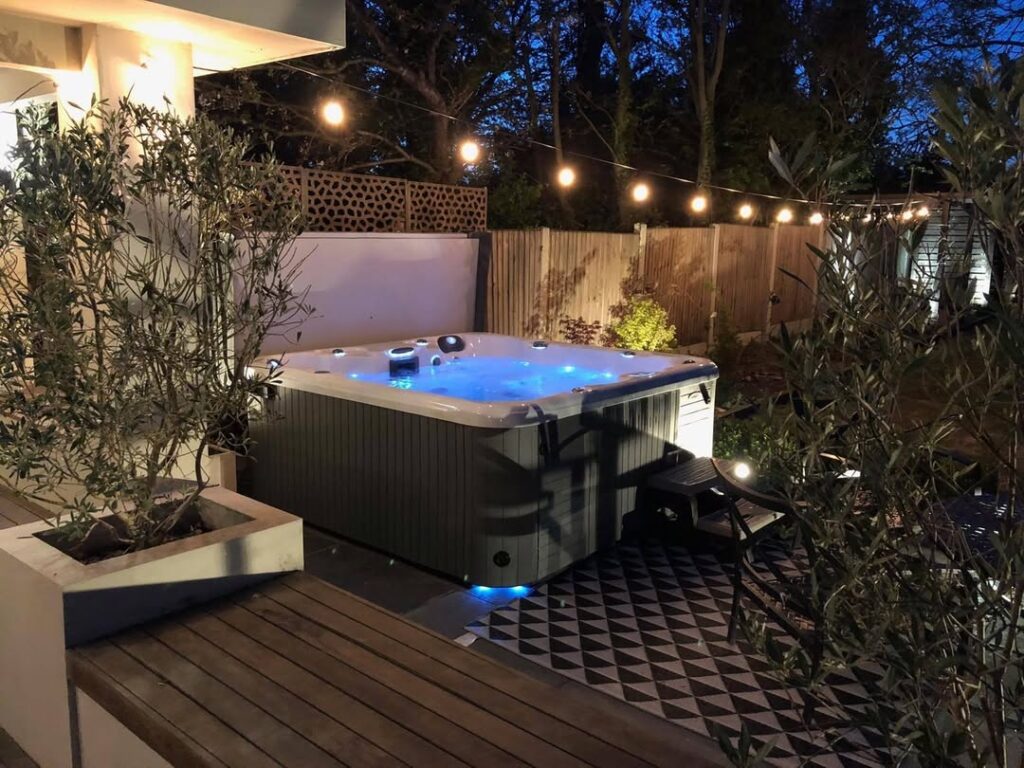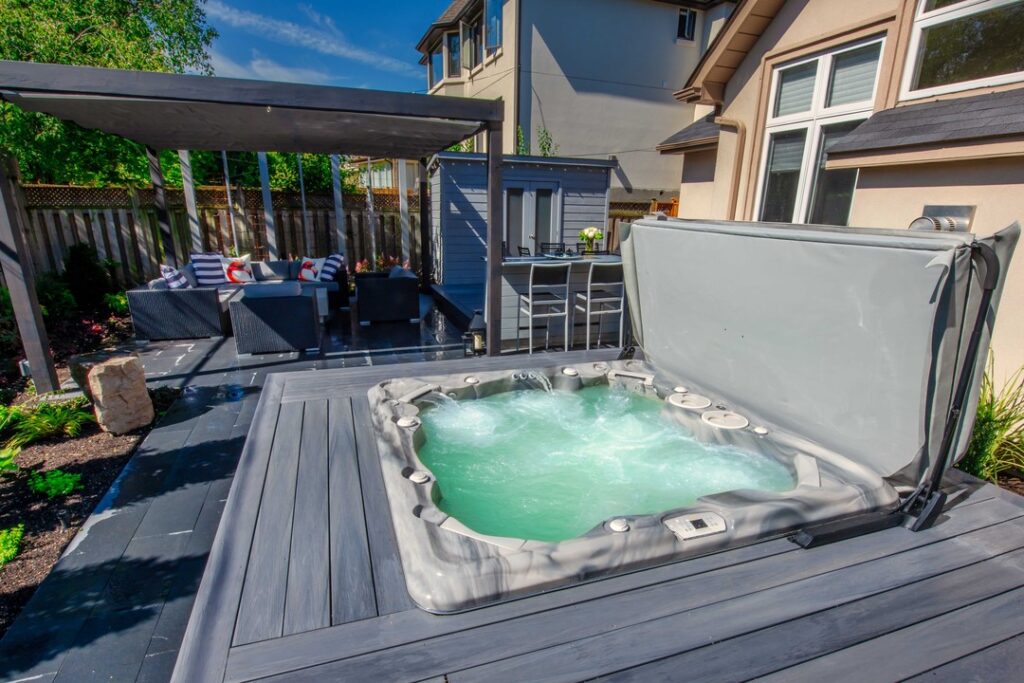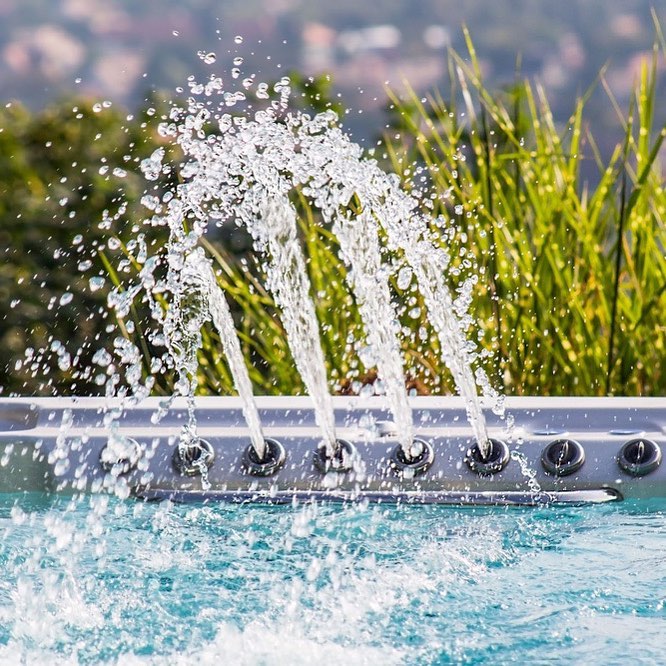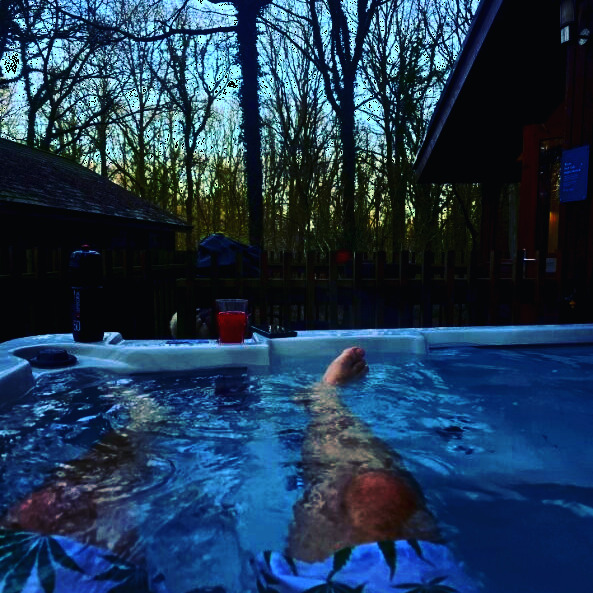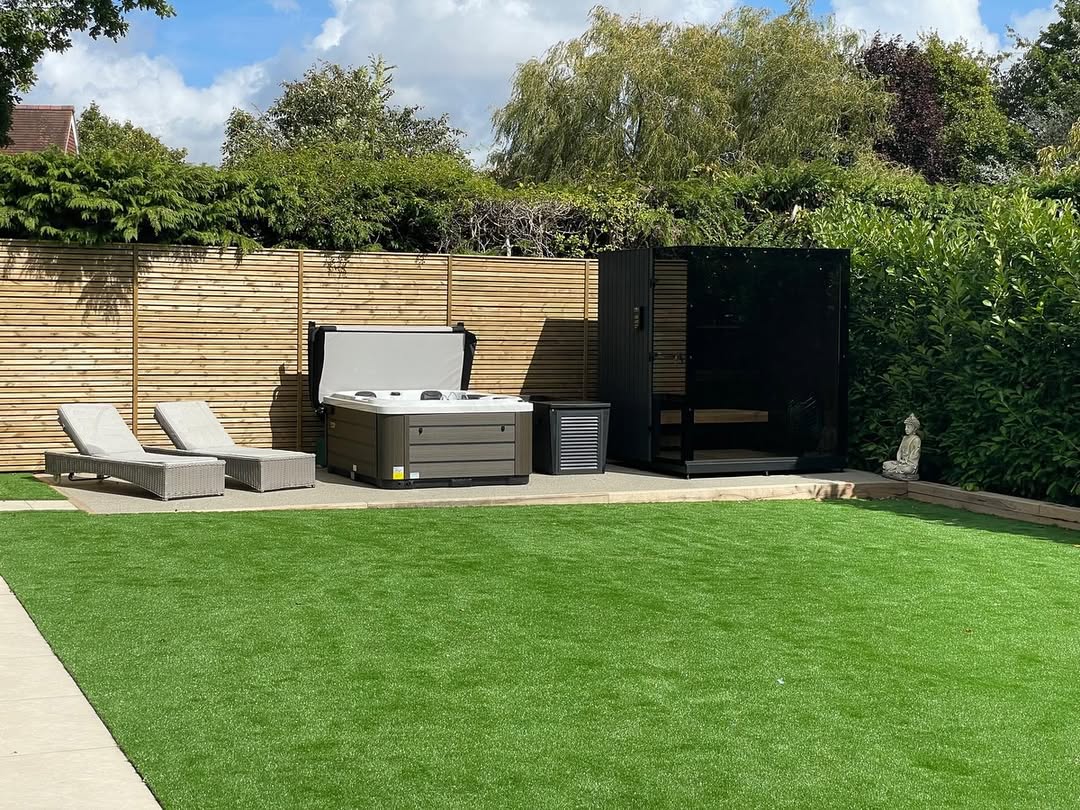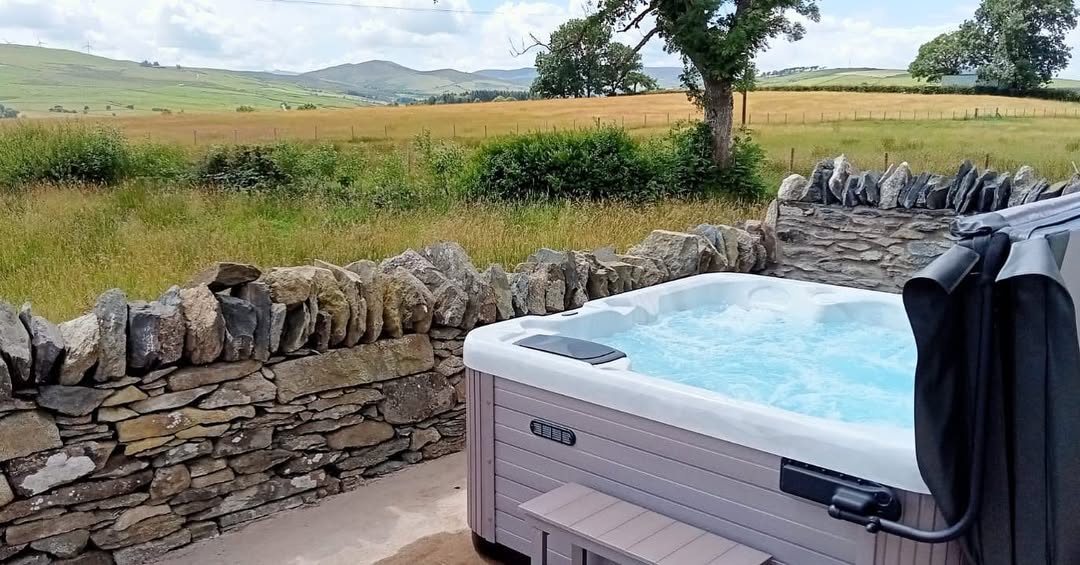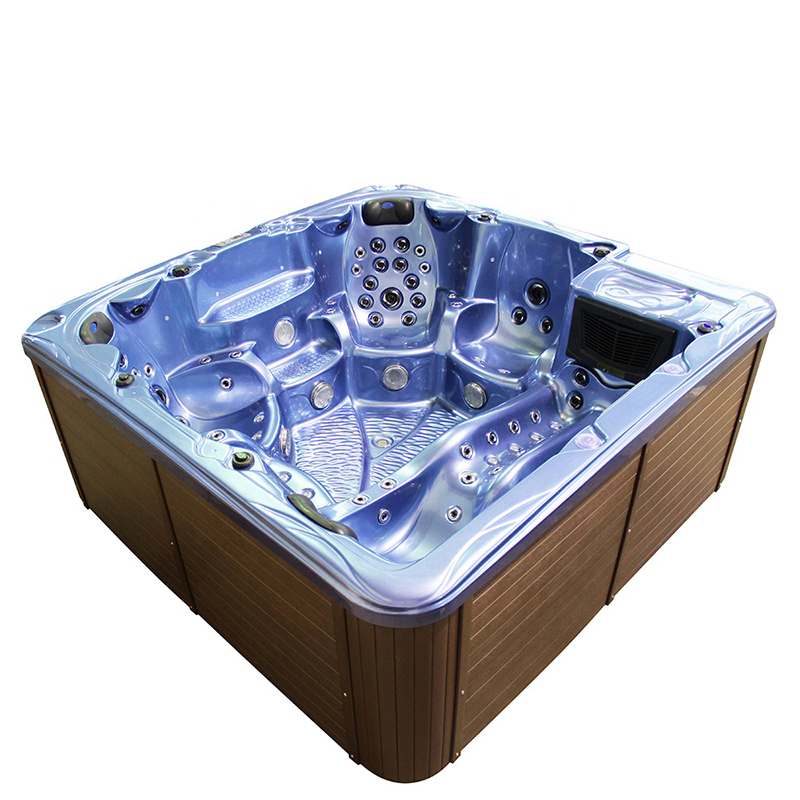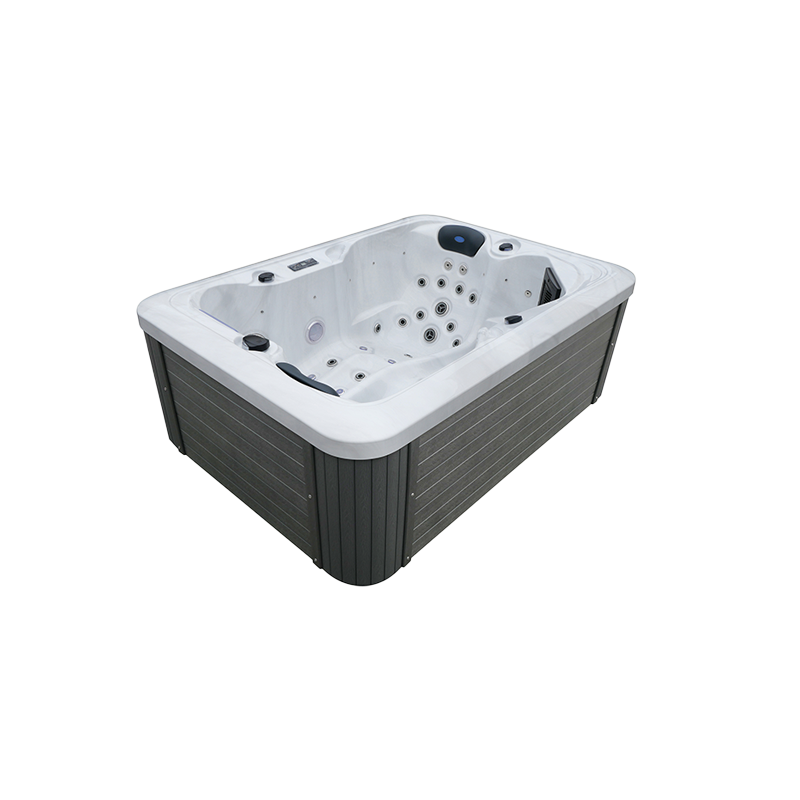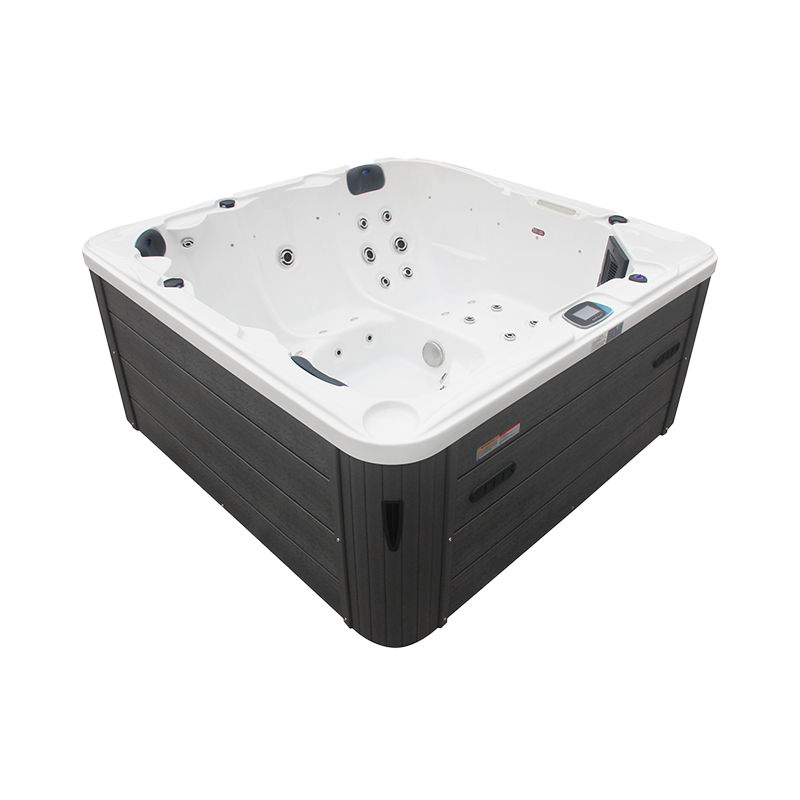When you purchase a hot tub, you’re not just buying an appliance—you’re investing in your well-being. A hot tub offers more than just relaxation; it provides numerous health benefits, enhances your fitness routine, and serves as a sanctuary for stress relief. However, like any wellness tool, a hot tub’s maximum benefits are tied to the way it’s used. One key factor to ensure your hot tub experience is as beneficial as possible is setting the right temperature. This guide will help you understand the optimal temperature for your hot tub based on different factors such as your health, age, and activities. Whether you’re soaking for relaxation or hydrotherapy, we’ll cover everything you need to know to get the most out of your investment.
1. The Right Temperature: Tailoring It to Your Needs
1.1 General Guidelines for Hot Tub Water Temperature
Finding the ideal temperature for your hot tub isn’t a one-size-fits-all solution. Your body’s response to heat depends on various factors, including your age, health status, and personal preference. However, there are some baseline guidelines to consider:
- Adults: The U.S. Consumer Product Safety Commission (CPSC) suggests that the maximum safe temperature for an adult in a hot tub should be 104°F (40°C). While this is the upper limit, it can be a bit too hot for some. Most people find that a temperature range between 100°F and 102°F (37.5°C – 39°C) is ideal for a soothing, relaxing soak. These temperatures allow for effective relaxation without causing discomfort or overheating.
- Gradual Adjustment: If you’re unsure what temperature works best for you, start at a lower setting (around 98°F or 99°F) and adjust it upward as you ease into the soak. Pay attention to how your body feels—if you feel like stepping out or sitting on the cooler step within a few minutes, it’s likely too hot.
- Everyone in the Hot Tub: If you’re soaking with family or friends, always take into account the age and health of those joining you. A temperature that is too high for a child or elderly person can cause overheating or discomfort. You may need to set the temperature lower to accommodate everyone comfortably.
1.2 Age, Health, and Preferences: Adjusting Temperature for Specific Needs
The temperature you choose can vary depending on individual needs and conditions. It’s important to tailor the temperature based on the users and the circumstances.
- Children and Hot Tubs: For young children, the water should be cooler than the adult range. 95°F to 98°F (35°C – 37°C) is typically best to avoid overheating, as children are more susceptible to heat stress than adults. Always supervise children when using the hot tub to ensure they don’t stay in for too long.
- Pregnancy: Pregnant women should be particularly cautious about the water temperature. Soaking in hot water can increase the body temperature, which could potentially harm the fetus. The safe temperature for pregnant women is generally 98°F (37°C), and they should avoid water temperatures above 100°F (37.5°C). It’s always a good idea to consult with a healthcare provider before using a hot tub during pregnancy.
- Elderly Individuals: Older adults may have difficulty regulating their body temperature and are more likely to feel the effects of heat. A temperature between 95°F and 98°F is safer for elderly individuals. If possible, start with a cooler setting and increase it slightly after a few minutes to ensure comfort.
- People with Health Conditions: For individuals with certain health conditions, like cardiovascular issues, high blood pressure, or respiratory concerns, it’s crucial to be cautious when using a hot tub. It’s advisable to consult a doctor to determine a safe temperature and usage time. In general, a cooler temperature (below 100°F) may be more comfortable for those with such conditions.
1.3 The Effect of Weather on Your Hot Tub Temperature
The weather and time of year can also influence the temperature you set your hot tub to. Here’s how to adjust your tub to the weather conditions:
- Hot Weather: During warm weather or in hot climates, you might find that a cooler soak is more comfortable. Consider lowering the temperature to 96°F to 98°F. This is cool enough to provide relief on a warm day without making you feel overheated. If you’re using your hot tub on a hot day, you can also opt for a CoolZone™ system (if available), which allows you to quickly cool down the water, providing a refreshing experience without waiting too long.
- Cold Weather: In contrast, during colder months or chilly evenings, a higher temperature (between 100°F and 102°F) will help you feel warm and relaxed. The steamy heat from the water will counteract the cold air, enhancing your overall experience.
- Adjusting for Exercise: If you’re using your hot tub for exercise or stretching, lower temperatures of around 98°F are preferable, as you want to prevent overheating while still benefiting from muscle relaxation.
1.4 How Long Does It Take to Heat Up a Hot Tub?
The heating time for your hot tub will depend on several factors, including the size of the tub and the starting temperature of the water. Generally, it can take between 18 to 24 hours for a freshly filled hot tub to reach the ideal temperature of 100°F (38°C). However, once your hot tub is set up and running, it’s recommended to leave it at your preferred temperature and maintain that temperature consistently. This way, the hot tub is always ready when you want to use it.
Modern spas, such as Hot Spring Spas, are designed to be energy-efficient, using insulated cabinets and custom-fitted covers to help retain heat and minimize energy consumption.
1.5 Energy Efficiency and Utility Bills
One of the concerns many new hot tub owners have is how much their utility bills will rise. The operating costs of a hot tub depend on factors such as the model, the temperature setting, and how frequently you use it. Typically, running a hot tub can increase your energy bill by about $20 to $50 per month, though this can vary. High-quality spas like Hot Spring models are designed with energy-efficient circulation pumps and insulated covers that help conserve energy. These features allow your hot tub to maintain a steady temperature with minimal energy use. Most models also comply with the California Energy Commission (CEC) standards, which are the highest energy-efficiency standards in the country, ensuring you are not spending more than necessary.
2. Tips for Adjusting Your Hot Tub Temperature
There are times when adjusting your hot tub’s temperature can enhance your experience. Here are some key moments when temperature changes may be necessary:
2.1 Adjust Temperature for Exercise or Therapy
If you’re using your hot tub for therapeutic purposes, such as hydrotherapy or gentle exercise, consider lowering the temperature to 98°F. This is especially important for activities like stretching, yoga, or rehabilitative exercises. A cooler temperature will prevent overheating while still allowing you to benefit from the soothing effects of the water.
2.2 Warm Days and Cool Off Sessions
During summer, especially on particularly hot days, your hot tub can be an oasis of coolness. If you plan to use it to cool off, lower the temperature to below 98°F, but not so low that it feels like a swimming pool. You can use systems like CoolZone™ to quickly bring the temperature down if needed.
2.3 Hosting a Group: Consider Everyone’s Comfort
If you’re hosting friends or family, be sure to consider their individual comfort. For example, younger children and elderly people may require a lower temperature setting for safety reasons. A good range for a mixed group of users would be around 98°F to 100°F. If anyone feels too hot, it’s important to allow them to exit the tub and cool off to prevent dehydration or heat-related health risks.
3. Hydrotherapy and Arthritis Relief: A Targeted Approach to Pain Relief
Hot tubs are fantastic for alleviating muscle pain, joint stiffness, and general discomfort. When it comes to managing arthritis pain, the heat from the water improves blood circulation, reduces muscle tension, and provides a soothing environment for the joints. While hot tubs offer these benefits at higher temperatures, 100°F is the ideal starting point for most individuals with arthritis. For therapeutic use, it’s recommended to keep the temperature within this range for 20 to 30-minute soaks. The gradual heat increases joint mobility, which can be particularly beneficial for individuals suffering from rheumatoid arthritis, osteoarthritis, or other chronic joint conditions.
Additionally, specific water exercises and stretches can be done in the hot tub to promote flexibility and reduce pain. These exercises are typically low-impact, allowing you to gently stretch and move joints that may be stiff due to arthritis.
4. Can Hot Tubs Be Used for Cooling Off?
Yes, hot tubs can absolutely be used for cooling off, especially when temperatures rise during the summer months. This is achieved by setting the temperature below body temperature, around 95°F to 98°F. In fact, many people use their hot tub to cool down after exercise or during hot summer days. Some advanced systems, like CoolZone™, allow you to adjust the water temperature quickly from a higher, relaxing level to a cooler, more refreshing one. This dual functionality makes the hot tub versatile, providing relaxation and cooling in one.
5. FAQs About Hot Tub Temperature
5.1 What is the best temperature for a hot tub?
The best temperature typically ranges between 100°F and 102°F (37.5°C – 39°C) for adults. However, for children and elderly individuals, a lower temperature of 95°F to 98°F is recommended.
5.2 How can I save energy on my hot tub?
To save energy, set your hot tub to a consistent temperature and use a high-quality insulated cover. Modern spas like Hot Spring models are designed to be energy-efficient, which helps reduce operating costs.
5.3 How long should I stay in the hot tub?
A typical hot tub soak should last 20 to 30 minutes for most individuals. Prolonged exposure to hot water can lead to overheating, dehydration, and other health risks.
6. Conclusion
Setting the perfect temperature for your hot tub is crucial to maximizing the enjoyment and benefits it offers. Whether you’re soaking for relaxation, exercising, or addressing health concerns, the right temperature can make all the difference. Tailor your temperature based on personal preferences, health conditions, and weather to create the ultimate hot tub experience. With a little adjustment, your hot tub can become a sanctuary of relaxation and rejuvenation all year long.

